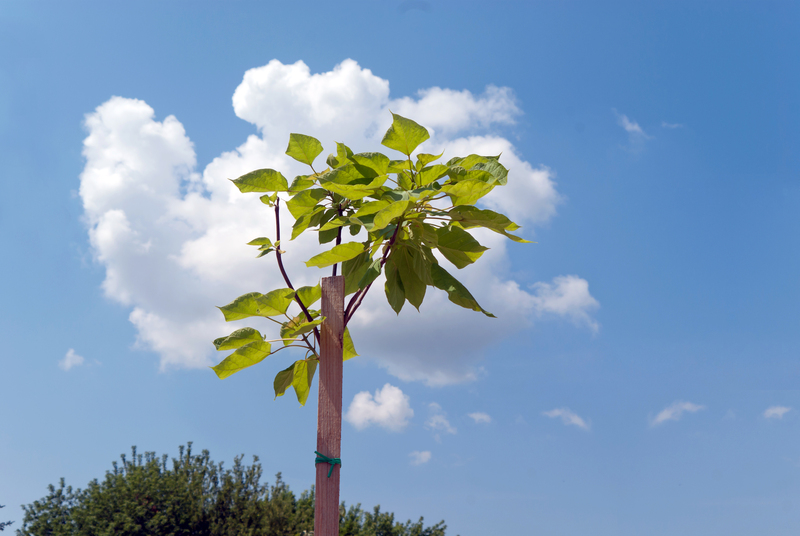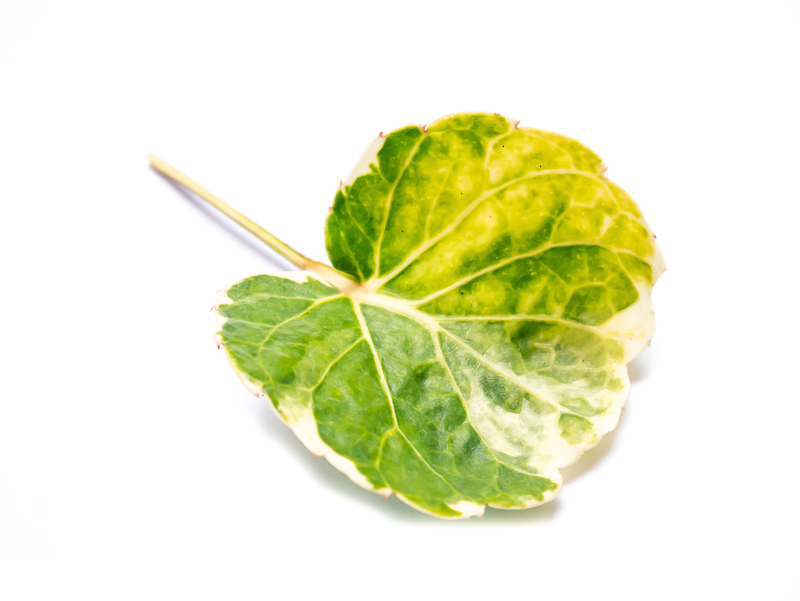Unlock the Secrets of Successful Container Gardening
Posted on 14/06/2025
Unlock the Secrets of Successful Container Gardening
Dreaming of lush greenery, vibrant flowers, or a fresh kitchen harvest but short on space? Welcome to the thriving world of container gardening. Whether you're an urban dweller with a small balcony or a homeowner seeking to beautify your patio, container gardens offer immense flexibility and creativity. This comprehensive guide will help you unlock the secrets of successful container gardening, revealing key strategies, essential tips, and expert tricks to maximize your garden's beauty and productivity.

What is Container Gardening?
Container gardening is the practice of growing plants--herbs, flowers, vegetables, or even small trees--in pots, tubs, or other containers instead of planting them directly in the ground. This popular method is ideal for gardeners facing space constraints, poor soil quality, or the desire for a portable and versatile green space.
- Mobility: Move containers to chase sunlight or protect from harsh weather.
- Pest Control: Easier isolation from pests and diseases.
- Soil Management: Complete control over soil composition and drainage.
- Design Flexibility: Instantly transform courtyards, balconies, rooftops, and window sills.
Benefits of Container Gardening
Container gardening offers multiple advantages beyond space efficiency:
- Accessibility - Easier to maintain for people with limited mobility.
- Customizability - Mix and match plants and containers for endless design possibilities.
- Extended Growing Season - Start plants indoors earlier and move them outside when weather improves.
- Water Efficiency - Containers typically require less water than traditional garden beds.
Now that you understand the fundamentals, let's explore the secret techniques to maximize your container gardening success.
1. Choosing the Right Containers
Your choice of container plays a critical role in your gardening outcome. Consider the following factors:
Material Matters
- Clay or Terracotta: Breathable but dries out quickly; excellent for Mediterranean herbs.
- Plastic: Lightweight, affordable, and retains moisture better.
- Wood: Attractive and insulating but can rot over time unless lined.
- Metal: Stylish and durable but may heat up rapidly in the sun.
Size and Drainage
- Size: Larger containers hold more soil and moisture, preventing roots from getting too hot or cold and reducing watering frequency.
- Drainage: Always ensure pots have drainage holes. Poor drainage leads to waterlogged roots and plant diseases.
- Shape: Deeper containers suit root vegetables, while shallow bowls favor succulents or herbs.
2. Selecting the Best Soil Mix
Success in container gardening hinges on the quality of soil used. Regular garden soil is usually too dense and may harbor pests or diseases.
Recommended Potting Mixes
- Professional Potting Mixes: Sterilized, lightweight mixes designed for optimal root health.
- DIY Blends: Combine equal parts peat moss or coconut coir, perlite or vermiculite, and good quality compost.
- Compost and Worm Castings: Boost soil life and plant nutrition with organic matter.
Tip: Refresh the top layer of soil annually to rejuvenate nutrients and improve structure.
3. Picking the Perfect Plants
Unlock the full potential of your container garden by selecting plants that thrive in your given conditions.
Understanding Light Requirements
- Full Sun: Tomatoes, peppers, basil, petunias.
- Partial Shade: Lettuce, mint, begonias, impatiens.
- Full Shade: Ferns, hostas, certain succulents.
Always group plants with similar light and water needs. This ensures each container's microclimate supports healthy growth.
Combining Plants Creatively
- Thrillers: Upright focal-point plants (e.g., spikes, cannas).
- Fillers: Midsize, bushy workers (e.g., geraniums, peppers).
- Spillers: Trailing plants to cascade over the edges (e.g., sweet potato vine, nasturtium).
Unlock the art of combination planting for visual interest and higher productivity!
4. Watering Wisely
One of the top secrets of successful container gardening is mastering watering techniques. Container plants dry out more quickly than those in the ground, and consistent watering is critical.
- Check Daily: In hot weather, some containers may need water twice a day.
- Water Deeply: Soak soil until water drains from the bottom, encouraging deep root growth.
- Avoid Wetting Leaves: Prevent fungal disease by watering directly at soil level.
- Mulch: Add a layer of organic mulch (like bark or straw) to slow evaporation and reduce soil temperature.
Pro Tip: Self-watering containers or drip irrigation systems can save time and ensure consistent moisture!
5. Fertilizing for Flourishing Growth
With limited soil volume, container gardens rely on regular feeding.
- Slow-Release Fertilizer: Mix into soil at planting time for long-lasting nutrition.
- Liquid Fertilizers: Quick-acting and easily absorbed; apply every 2-4 weeks during the growing season.
- Compost Tea: For an organic boost, drench containers with nutrient-rich compost tea periodically.
Watch your plants for signs of nutrient deficiency and adjust accordingly. Yellowing leaves or poor growth may indicate a need for extra feeding.
6. Managing Pests and Diseases Organically
While containers help reduce many pest issues, vigilance is key for continued success:
- Inspect regularly: Check leaves, stems, and undersides for early signs of pests and disease.
- Encourage beneficial insects: Ladybugs and lacewings keep aphids in check.
- Neem oil or insecticidal soap: Useful for organic pest control without harming pollinators.
- Remove infected plants promptly: Prevent the spread of disease by composting or discarding affected specimens.
7. Designing Stunning Container Arrangements
Beyond function, container gardens can be a visual masterpiece. Here's how to create arrangements with color and texture:
Color Themes
- Monochrome: Showcase shades of a single color for a serene effect.
- Complementary Colors: Opposites on the color wheel (e.g. purple and yellow) create lively contrast.
- Seasonal Interest: Switch out annuals or accent plants with the changing seasons.
Layering and Height
- Tall: Place tall plants in back or center of containers; they anchor the arrangement.
- Medium: Surround with full, bushy plants.
- Trailing: Let vines and creepers flow over the edge for a lush, finished look.
Experimenting with different plant heights, leaf textures, and bloom times guarantees a beautiful container garden all year round.
8. Common Mistakes and How to Avoid Them
Even experienced gardeners slip up. Here's how to sidestep the most frequent container gardening pitfalls:
- Overcrowding: Allow space for roots and air circulation. Follow plant spacing recommendations.
- Poor Drainage: Never skip drainage holes, and avoid using saucers that fill with water for long periods.
- Overwatering: Use your finger or a moisture meter to check soil moisture before watering.
- Ignoring Sun Requirements: Know your site's light throughout the day and match plants accordingly.
- Sticking to One Season: Plan for continuous color by swapping out plants or using perennials.
9. Seasonal Care for Container Gardens
Caring for your containers year-round is vital to ongoing success.
Spring
- Refresh soil and start new plantings.
- Divide overcrowded perennials and replant.
Summer
- Water frequently, especially during heatwaves.
- Fertilize to keep plants blooming and producing.
- Deadhead flowers and trim back overgrowth.
Autumn
- Remove annuals as they finish, replace with cool-season plants like pansies or kale.
- Prepare tender perennials for indoor overwintering if needed.
Winter
- Insulate containers or bring fragile pots indoors in cold climates.
- Choose evergreens or add seasonal decorations for winter interest.
10. Sustainability and Eco-Friendly Container Gardening
- Reuse and Recycle - Repurpose old buckets, cans, or furniture as unique containers.
- Rainwater Harvesting - Collect and use rainwater for irrigation.
- DIY Compost - Make your own compost to reduce waste and enrich container soil naturally.
- Native Plants - Choose varieties adapted to your region for less maintenance and greater resilience.

Inspiring Container Garden Ideas
- Vertical Gardens: Use wall-mounted pots or tiered plant stands when short on floor space.
- Edible Gardens: Grow salad greens, strawberries, or dwarf fruit trees in pots by your kitchen door.
- Herb Pots: Keep culinary essentials like basil, parsley, and chives close at hand.
- Pollinator Havens: Attract bees and butterflies with marigold, lavender, and zinnia containers.
- Water Features: Try a container water garden with miniature lilies or floating plants.
Unlock Your Container Gardening Potential Today!
Unlocking the secrets of successful container gardening requires a keen eye for detail, an appreciation for experimentation, and a willingness to adapt. Start by choosing suitable containers and soil, pick plants wisely, establish healthy watering and feeding routines, and never stop exploring fresh ideas to invigorate your gardening adventure.
Whether you're eager to produce homegrown vegetables, dazzle with colorful flowers, or simply create a soothing natural oasis, following these expert tips will bring your container garden to life. Embrace the joys of container gardening and reap the bountiful rewards--wherever you call home!
Happy Container Gardening!

